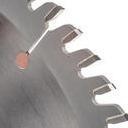-
Posts
13 -
Joined
-
Last visited
Recent Profile Visitors
The recent visitors block is disabled and is not being shown to other users.
TCS's Achievements
Rookie (2/14)
-
-
-
-
Rare
-
Recent Badges
-
An interesting mod for my Firewood processor....
-
There was higher level testing on the processor this year. I bought a double trailer load of mixed knotty maple though along with some local ash and found the rate of damage jump up drastically. I posted this video that gives an idea of the crooked winding logs requiring constant winching- and if you wait till the end it shows the moment the lower wedge was sheared clean off. I called it Homemade Wood Processor has a Bad Day https://www.youtube.com/watch?v=5LleSPY7bVg&fbclid=IwAR0w1JnWTBKUB2wPkGURQpg2OBUb4FJv69TstCCgVS6a0qA31qH_7bMY5IE jmur1
-
Hi MattyF: Totally understand and agree with your comment in general. The design of this machine is different from the big processors in a couple of significant ways. This processor has a hold to run lever on it that enables the engine throttle and releases the blade brake. The "small" blade size allows for the speed to be quickly stopped and started. The saw will go to zero RPM if it is feed too quick into the log where the engine drops below 1000 RPM and then the clutch just slips. This is a fairly common occurrence but the clutch has lasted several years without any maintenance. Previously I had only fair lifespan on the belts. I was originally expecting to run 2 belts from the engine down to the saw - in-fact I bought the double clutch pulley (on the engine) and have the double pulley sitting ready on the idler shaft. However I made a change last year that has worked out well - Some background first: Note there are two drive paths for the belts: 1. The first is the engine clutch to the cutting head idler belt which is then geared up approx 2x and then from the head idler down to the saw blade belt. 2. The second is from the engine to the hydraulic pump idler shaft belt. In path 1 the long belt (B118) - was generally the quickest to fail. I had been using the cheapest "common fan belt" style of belt since they were cheap and the machine was constantly under revision for blade speed and engine rpm setting. As soon as I finalized the speed layout I switched over to the Gates COG belt and found a world of difference. It has lasted for the whole season so far (28 bush cord) and looks like it will carry on until next year. Since the centrifugal clutch on the engine will kick out as the rpm drops below 1000; the belts don't see large forces. In path 2 the hydraulic drive belt was the same story. After I switched over to the Gates belt I saw no significant wear. I will keep the multiple belts concept in mind, but for now - the setup is working well. Thanks for your comments, they are appreciated. jmur1
-
I finally was able to put together an update video. It is linked here: Appreciate the interest and the comments! jmur1
-
It is a very tough decision at the design stage to set the cylinder size. I did not want to have a pile of logs that could not be cut with this machine. The way it sits right now it will split anything that fits in the split bay. The speed is usable. The next step is to upgrade the engine to a 20hp twin cylinder (from a 15hp single cylinder). This will allow for high cut rates and hydraulic flow - stay tuned! Thanks for the comment!
-
This circular saw is far quieter than the big ones. I have a video with no music so the sound is better. Not exactly quiet but decent. I really noticed after I installed the guard - the noise dropped significantly. You can hear this in the video when it goes to the gopro section at 2:09. Thanks for the comment! https://youtu.be/GbQvW13otPA
-
TCS changed their profile photo
-
Hi chopalog I found the chainsaw choice to be weaker based on the following: 1. Blade maintenance and lifespan 2. Noise and vibration 3. Smoke 4. General Blade Proximity Hazzards 5. Speed 6. Sawdust Now I know if you had a hydraulic motor running the saw several of these issues would disappear, but the main issue of maintenance would always be there. I have found the circular blade to be awesome for maintenance intervals. It need to be sharpened less than once a year. I plan to upgrade my power-plant (to a 20hp) and I expect this to lead to much improved speed. TCS
-
I am now working on a sliding tray insert for the slab saw. I will have an update shortly.
-
Hi Sandspider: Does the video link above your post not work for you?
-
Here is the working prototype: https://youtu.be/70CNqps-8vY
-
The critical component that was analyzed, considered, and reconsidered was the large blade lever. This device was an important design based on safety, operation, and maintenance. There were very important design assumptions made based on the potential risks of failure. Shaft sizing and placement along with other mounting positions were part of this requirement. Pic 2 and 3 show the first concept layout for the lever design. A sample results plot is shown in Pic 4. Pic2 Pic3 Pic4
-
The layout was created and detailed in CREO.
-
I had been around wood sawing and general firewood for many years. I have a sawmill saw (Woodmizer LT30). This means there is also a large supply of slab firewood at my shop. I wanted to design my own processor and looked around at the various options available. I had a two jobs to accomplish with this processor design - slabs and split firewood and I wanted one machine to do both. Lots of chainsaw and buzz saw experience led me to lean in the large blade direction based on the blade maintenance and speed differences. I found a Ø 26-1/2" Carbide blade on Ebay. I bought the blade and started to layout how the new machine could work. I came up with a layout that I had not seen anyone else do - I wondered if it would ever work - but I went ahead and built it anyhow. I have been using it for 3 years now - It saves my back so much for the firewood, I started selling it on the side!






